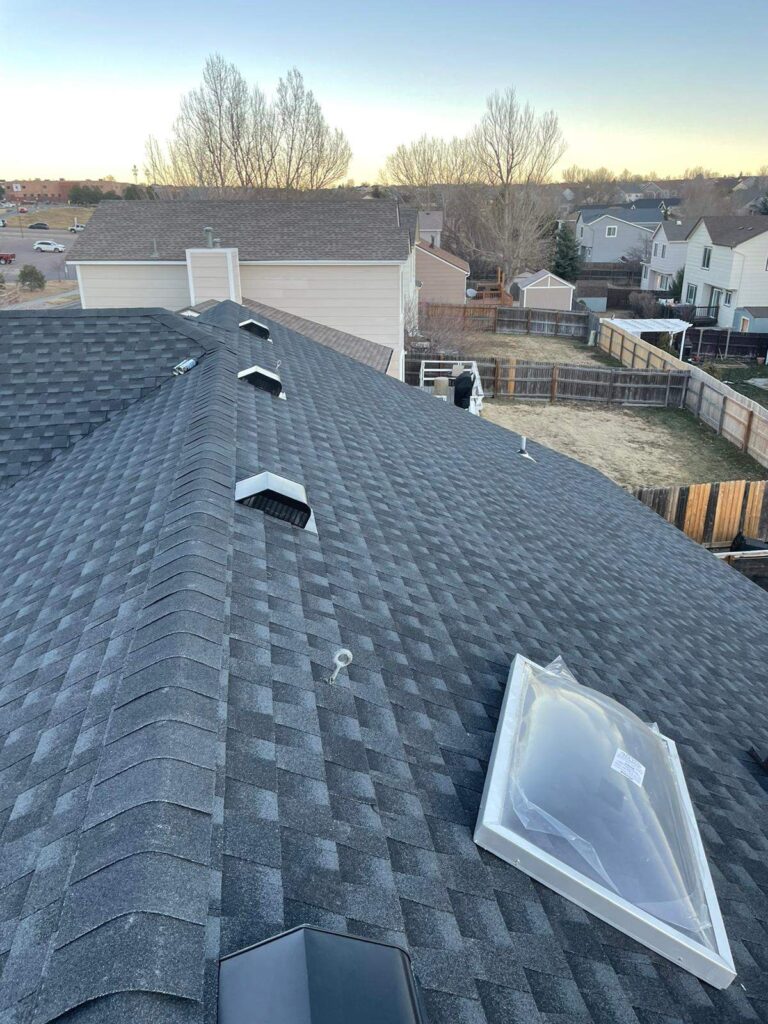Understanding the Mechanics of Roof Ventilation
We emphasize that proper roof ventilation is the foundation of a resilient roofing system. As heat rises within a structure, it accumulates in the attic or roof cavity, leading to elevated temperatures and excessive moisture buildup. Without a well-balanced ventilation system, this stagnant heat can deteriorate roofing components over time.
A functional ventilation system operates through a strategic intake and exhaust mechanism. Cool air enters through intake vents, typically located along the soffits, and pushes out warm, moist air through exhaust vents placed near the ridge of the roof. This constant airflow helps to maintain equilibrium, prevent material degradation, and ensure indoor comfort regardless of the season.
Common ventilation methods include:
- Ridge Vents: Installed at the roof’s peak to allow warm air to escape naturally.
- Soffit Vents: Located under the eaves to draw in cooler outside air.
- Louvered Vents: Durable, static vents made of metal that allow passive airflow.
- Turbine Vents: Wind-powered rotating vents that enhance air movement.
- Powered Attic Fans: Electrically or solar-driven systems for forced ventilation.
Each type is chosen based on roof design, attic space, and the specific airflow requirements of the property.
Preventing Structural Damage from Heat and Moisture
We’ve seen firsthand how unventilated roofing systems contribute to serious structural compromise. Without airflow, trapped heat and humidity accelerate the breakdown of wooden trusses, sheathing, and insulation. Prolonged exposure to these conditions leads to:
- Wood Rot and Warping: Moist environments weaken load-bearing components.
- Premature Shingle Aging: High attic temperatures cause roofing materials to curl, crack, and lose granules.
- Deterioration of Underlayment: Moisture undermines waterproof barriers that protect against leaks.
A balanced roof ventilation system mitigates these threats by regulating internal temperature and keeping humidity in check.
Combatting Ice Dams in Cold Climates
Denver homeowners are especially familiar with the perils of ice dams. These icy ridges form when warm attic air melts snow on the roof, which then refreezes at the edges, creating blockages that prevent proper drainage.
We stress that a properly ventilated attic reduces the risk of ice dams by keeping the roof deck uniformly cold. With consistent airflow, the likelihood of snowmelt and refreezing is greatly diminished, preserving both the shingles and gutter systems.
Mold and Mildew: Silent Threats in the Attic
Another common issue in poorly ventilated roofing systems is mold infestation. Warm, moist air becomes a breeding ground for fungal spores, which can infiltrate insulation, wood, and drywall. Left untreated, mold spreads quickly, compromising indoor air quality and posing health risks.
Through adequate ventilation, we maintain airflow that disrupts this environment. By expelling moisture-laden air and reducing condensation, ventilation prevents the ideal conditions mold requires to thrive.
Energy Efficiency and Cost Reduction
Ventilation also has a direct impact on a home’s energy consumption. Attics that trap heat force HVAC systems to work harder, increasing utility bills during summer months. Conversely, excess attic moisture in winter can hinder insulation performance, making heating systems less efficient.
Our approach includes designing ventilation that contributes to energy savings year-round. By optimizing airflow, we reduce heat load on cooling systems and prevent thermal insulation degradation, leading to measurable cost savings for homeowners.
Extending Roof Lifespan Through Intelligent Ventilation
The longevity of a roof heavily depends on temperature and moisture regulation. A well-ventilated roof can last years longer than one exposed to extreme interior climate fluctuations. When ventilation is prioritized, the roofing materials stay intact, the structural components remain dry, and the entire system performs optimally.
Routine inspections and maintenance ensure that ventilation remains effective throughout the life of the roof. We advise homeowners to schedule regular evaluations, especially if they notice uneven temperatures, mold odors, or ice dam formation.
Repairing Inadequate Ventilation Without Replacing the Roof
Ventilation problems do not always require a complete roof replacement. Often, upgrades can be made with targeted installations such as adding ridge vents or powered exhaust fans. Modern systems can be retrofitted to existing structures without invasive construction.
For homeowners experiencing issues, our team at Tried and True Roofing provides expert solutions in roofing in Denver, offering customized ventilation assessments and affordable enhancements. As one of the trusted roofing companies in Denver Colorado, our goal is to maximize the lifespan and performance of your roof through precision-engineered ventilation systems.
Conclusion
Proper roof ventilation is not optional—it’s essential. It safeguards structural integrity, prevents moisture-related damages, enhances energy efficiency, and ensures long-term performance. Whether you’re building new or upgrading an existing system, we recommend taking a proactive approach to ventilation to protect your investment.
By partnering with experienced roofers in Denver, homeowners can secure efficient, tailored solutions that align with both climate conditions and architectural needs. For trusted advice and quality service, work with a Denver roofing company that understands the intricacies of airflow and structural preservation.


